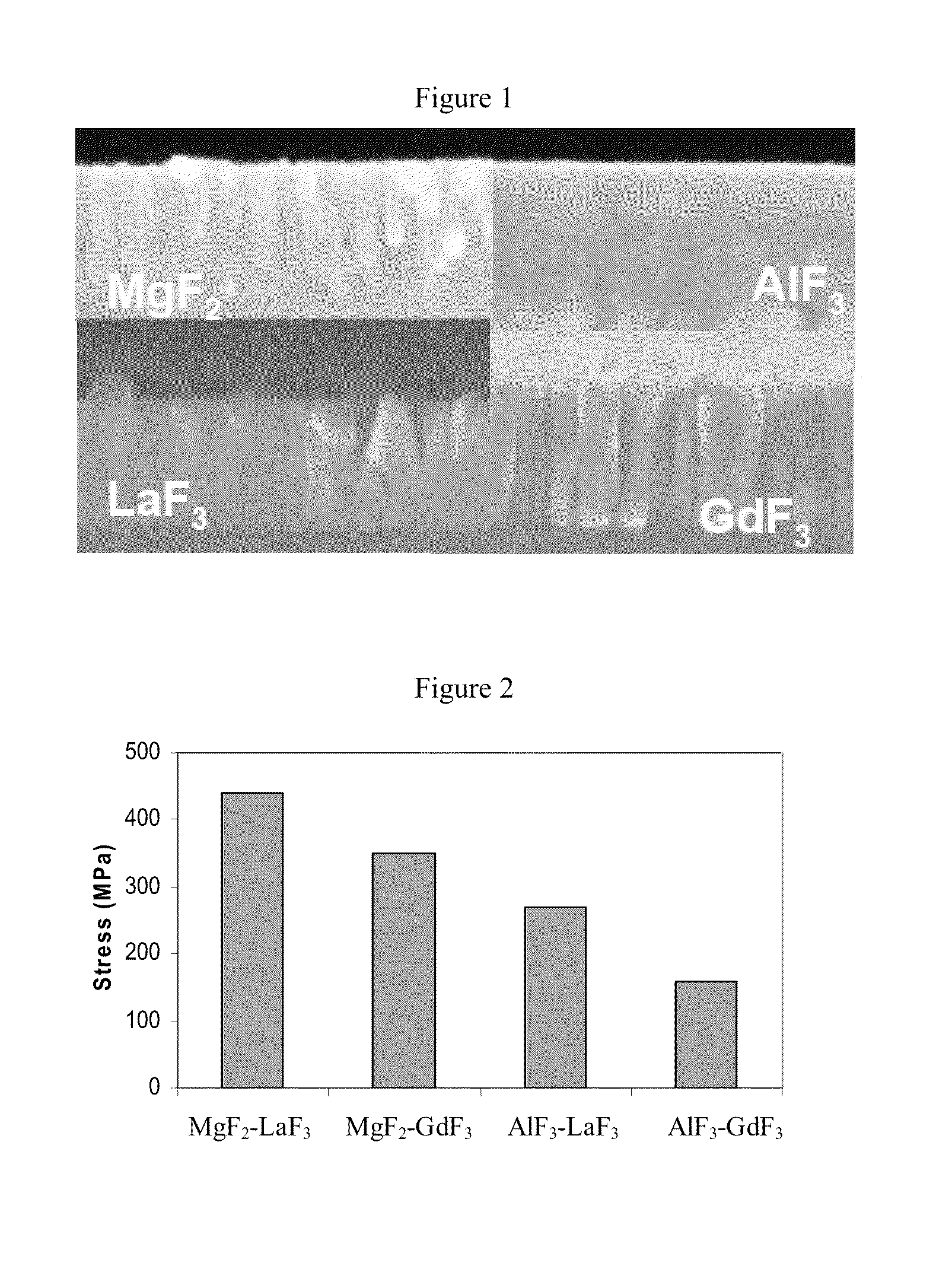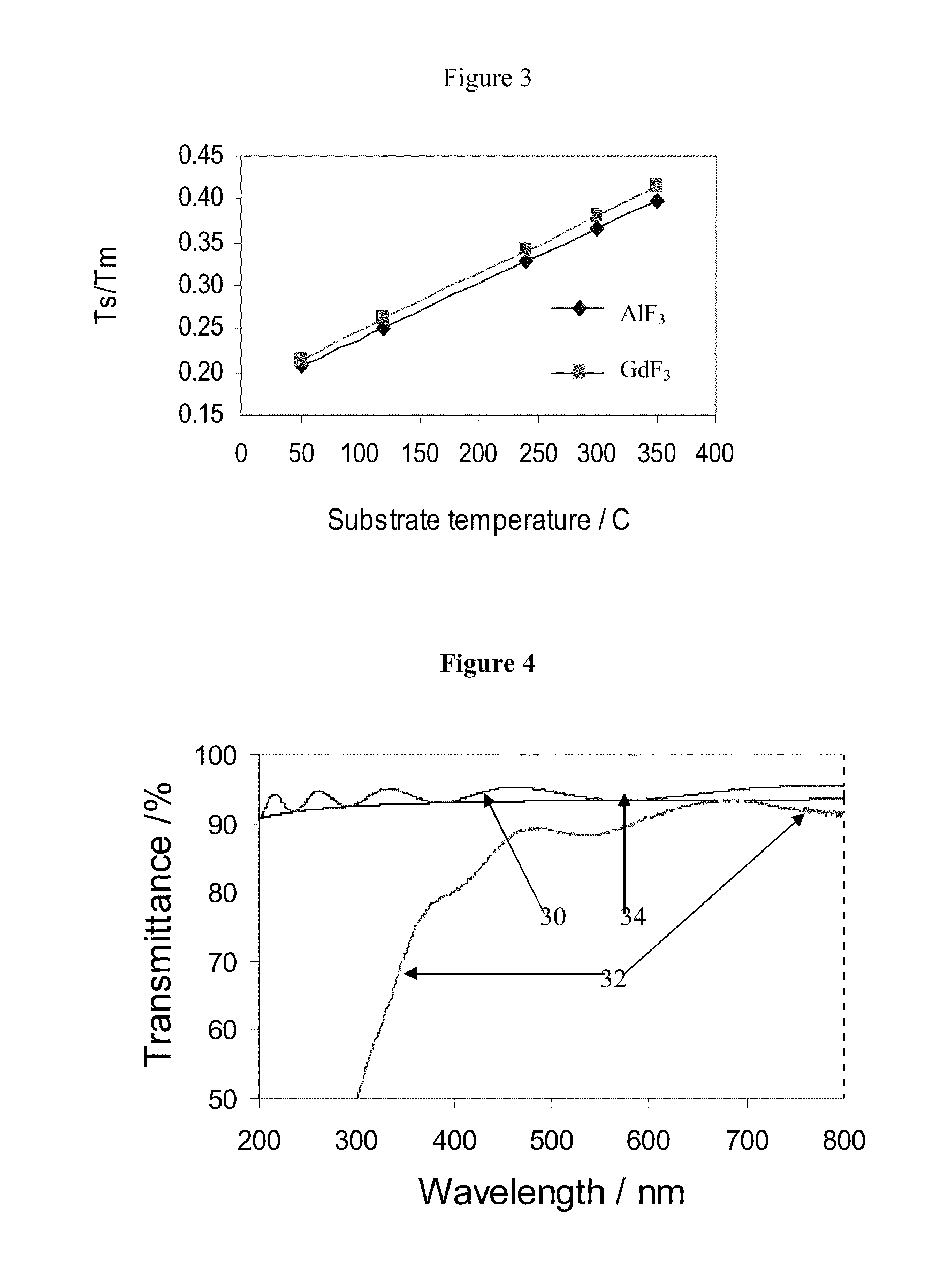Extending the stability of UV curable adhesives in 193NM laser systems
- Summary
- Abstract
- Description
- Claims
- Application Information
AI Technical Summary
Benefits of technology
Problems solved by technology
Method used
Image
Examples
example
[0070]FIG. 14 shows SEM cross-sectional image of a 5-layer AR coated face of a CaF2 lens using the techniques described in this invention. Starting from the CaF2 surface, the 5-layer comprises a 20 nm AlF3 base layer, a first period consisting of a 64 nm of a binary 90% GdF3 and 10% AlF3 layer and a 38 nm AlF3 layer, and a second period consisting of a 31 nm binary 90% GdF3 and 10% AlF3 layer and a 37 nm AlF3 layer. The base AlF3 layer and the two periods of two layers result in the five layer coating. As can be seen, GdF3 film structure mitigation is realized via the AlF3 insertion and the special heating procedure described herein. FIG. 15 plots 193.3 nm reflectance as a function of angle of incidence on the 5-layer AR coated CaF2 lens. The measured reflectance is less than 0.5% at an angle of incidence up to 45°. The edge of the lens has only an AlF3 coating along at least a portion of the edge which is applied in the same apparatus. The edge coating can be applied either before ...
PUM
| Property | Measurement | Unit |
|---|---|---|
| Fraction | aaaaa | aaaaa |
| Time | aaaaa | aaaaa |
| Time | aaaaa | aaaaa |
Abstract
Description
Claims
Application Information
 Login to View More
Login to View More - R&D
- Intellectual Property
- Life Sciences
- Materials
- Tech Scout
- Unparalleled Data Quality
- Higher Quality Content
- 60% Fewer Hallucinations
Browse by: Latest US Patents, China's latest patents, Technical Efficacy Thesaurus, Application Domain, Technology Topic, Popular Technical Reports.
© 2025 PatSnap. All rights reserved.Legal|Privacy policy|Modern Slavery Act Transparency Statement|Sitemap|About US| Contact US: help@patsnap.com



